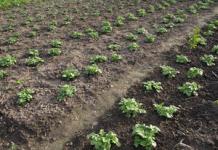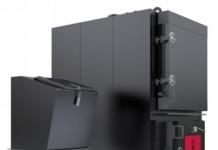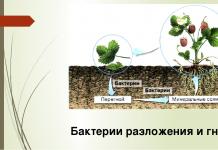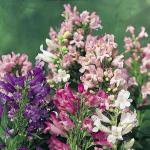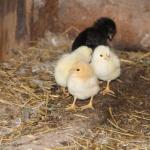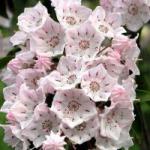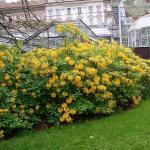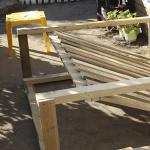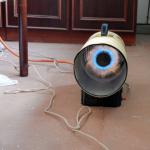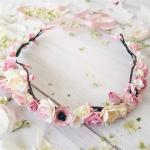Among Russian flower growers, the perennial penstemon is not yet very well known, but due to its bright decorative qualities, it is gaining popularity. It is already actively used to decorate summer cottages, as well as to create landscape compositions.
The flower has a huge number of species and varieties. Among penstemons there are both annuals and perennials plants. Penstemon is native to Central and North America.
Penstemon perennial is a plant with a straight stem from 20 to 120 cm.
It has bright green smooth leaves and multi-colored bright inflorescences collected in a panicle, which look like a bell.
Bells, depending on the variety, can be white, pink, bright red, lilac. The abundance of completely different colors of inflorescences adds decorativeness to the flower when grown.
It winters well in the middle lane and blooms from July to September.
Growing penstemon from seeds
This method can be divided into seedling propagation and sowing seeds immediately in open ground.
When sowing in the ground seeds are planted either in autumn or at the end of May, beginning of June, when the earth warms up enough. It should be borne in mind that when sowing in open ground, it is not always possible to achieve good seed germination.
Growing seedlings
In March, the seeds are sown in prepared boxes with soil. For normal development, penstemon needs well-drained soil. Therefore, a layer of expanded clay is placed at the bottom of the box. From above, the soil is sprinkled with a layer of river sand.
Seeds are carefully placed on the surface of the soil, watered and covered with glass or film to create a greenhouse effect.
For germination, seeds need abundance of sunlight and a temperature of 18-22 degrees. In addition, the seeds need to be regularly watered and ventilated. After the sprouts appear and get a little stronger, they must be transplanted into peat pots.
After picking, seedlings need a slightly lower temperature, +15 degrees.
It is possible to plant seedlings in open ground at the end of May, when there is no longer any danger of a sharp drop in temperatures.
Popular types of pestemon for the garden
Bearded rather tall herbaceous perennial, with a racemose inflorescence that blooms in June and continues to bloom 1-1.5 months. The inflorescence is formed by bright red or pink flowers.

Brilliant flower of medium height for penstemons. Reaches approx. 25 cm. A plant with long leaves and a large blue or purple inflorescence. It is resistant to frost and begins to bloom.

foxglove
The foxglove is almost the highest species. grows up up to 120-130 cm. It has large lanceolate dark green leaves. Winter hardy look. Inflorescences are large, collected in a panicle. Flowering begins in June.
Alpine is a small perennial that blooms end of May to July. Dense inflorescences of bluebells can be blue, blue or purple. For a long time without a transplant, it does not lose its decorative qualities.
Can grow in one place up to 5 years.

Hard-haired - compact plant, the bushes of which only 15 cm high. It has pubescent dark green leaves and a reddish peduncle. Numerous inflorescences are usually white or lilac. Abundant flowering lasts up to a month and a half.

Planting rules
It is preferable to plant in open ground grown and strengthened sprouts penstemons. Seedlings are planted in the second half of May. Sprouts are planted in moist soil sprinkled with sand. The distance between the bushes is about 30 cm.
If the sprouts are planted in the ground too early, they will take a long time to take root and adapt to a new place. Therefore, it will bloom later.
flower care
Penstemon must be placed on well lit plots. The plant is photophilous. The flower prefers light, well-drained soils and fairly plentiful watering.

Plant does not tolerate stagnant moisture. This leads to root rot.
It is necessary to periodically loosen the soil and apply three times a season. Penstemon can be fertilized with both organic and complex mineral fertilizers. This will allow for more lush blooms.
The flower should not be placed in ventilated areas. Penstemon does not like the wind.
Plants for the winter cut and cover to protect from severe frosts. You can use leaves or spruce branches.
Diseases and pests
Penstemon very disease resistant. Excessive watering can lead to the development of fungal diseases. In this case, it is necessary to treat the plant with a suitable fungicide and adjust the watering.
Sometimes the top of the plant begins to dry. Timely pruning of the bush will help solve this problem.
So far, penstemon is a rather rare guest in garden plots. But thanks highly decorative the plant has already gained its admirers and is gaining popularity among flower growers and designers.
Looks great on verandas, grows well in outdoor flowerpots, is a bright decoration of alpine slides. Penstemon is also suitable for cutting. Although the flower does not last long, the bouquets look very beautiful.
Penstemon is a novelty in garden plots. But due to its unpretentiousness and beauty, the plant gains more and more friends and admirers every season. After all, quite a bit of effort allows you to get amazing beauty at your summer cottage.
Penstemon is a perennial plant that resembles a spear in appearance. This plant blooms in pink, red, white and purple, sometimes yellow. Penstemon inflorescences have a paniculate structure, and the flowers on them are located in the upper part and grow densely. The pods of the plant are in the form of boxes in which there is a large amount of seed, these boxes have a bivalve structure. The color of the seeds is often brown, their shape is different, the size is not large. The advantage of seeds is that they will retain their properties for two years. If you plant a plant, it will sprout within two weeks.
The main part of penstemons is herbaceous plants, and all the rest are shrubs and semi-shrubs. According to the shape of the plant, its height also changes, herbaceous forms grow about ten centimeters in height, and shrubs can reach three meters. Branching of the stem is weak, but despite this, the stems have a very strong structure. Leaflets can be of two forms: the shape of a spear and the shape of an oval. In addition, there are species in which the foliage has a red tint. These are general patterns of growth and appearance of a plant, but each variety and hybrid of a plant has its own description.
Kinds
The most common types of penstemon plants for our climate are:
- Penstemon alpine - its flowers have a yellow-lilac color, the pharynx is white. The inflorescences have an umbrella structure, and are located close to each other.
- Bearded penstemon - this plant can grow up to a meter tall. Blooms red or pink. The flowers themselves are similar in appearance to the bell.
- Penstemon bell-shaped - can reach a height of half a meter to a meter. The flower resembles bells, which is reflected in the very name of the plant. The color of the petals is lilac, maybe with a pink tint.
- Foxglove penstemon - according to its anthropometric data, this variety does not have significant differences from the previous variety. Penstemon flowers of this variety are most often white or pale pink.

Landing
Penstemon perennial prefers to grow in sunny areas, so it is important to choose the right place for planting it. After choosing a suitable place for the plant, check if the area is too windy, because this is one of the factors that the plant does not like. As for the soil, light and well-drained soil will be optimal for penstemon.
As for planting a plant, this can be done with the help of seeds, which are either germinated or immediately sown in the ground. Having taken up the cultivation of penstemon, growing from seeds will be the main method of propagation of the plant. It is best to germinate seedlings, which are later planted in open ground. In late winter or early spring, seeds should be sown in prepared soil for germination. Deep seeds do not fall asleep, because light will be vital for them.

There are species that can be planted for the winter. The soil in which the seeds will be sown must be moist. After planting the seeds, you need to sprinkle them with sand, which must undergo heat treatment with boiling water to disinfect it. After all the procedures, the seed container is covered with a film or glass. After two weeks, seedlings of the plant will begin to appear. Penstemon, the cultivation of which is no less demanding, like other plants, needs a certain temperature regime. The optimum temperature in the room will be eighteen - twenty-four degrees. As soon as the seedlings have grown and showed leaves, it is better to plant them in individual pots. In May, when the temperature stabilizes and there is no threat of frost, penstemons can be planted in open soil. This plant has an interesting feature, if it is planted ahead of schedule, it will bloom much later than it should, and if planted a little late, it will bloom very soon. If there is no desire to mess with seedlings, then you can sow the seeds directly into the ground. As for other perennials, this procedure should be carried out in the spring, when the frosts will definitely not hit, or in the autumn.

Care
Penstemon, planting and care, for which it does not fundamentally differ from other perennials, the most important thing is to provide it with good drainage. The plant requires a careful attitude, although it is not picky. It is important to ensure that there is no stagnant water near the roots, which is very dangerous for penstemon. Watering should be carried out systematically, and special control over this should be in drought. The drying of their root system will also negatively affect the condition of the flower. To maintain a balance between moisture and dryness, you can mulch the soil near the roots of the plant. Part of caring for penstemon is cleaning up the dried parts of the plant and loosening the soil near the bush itself.
The plant meets the wintering process by cutting off all ground parts. All that remains of the plant must be covered with spruce branches or leaves.

Another important detail is the application of fertilizers under the plant. It is best to fertilize penstemon three times during the active period of its growth and development. The most favorable are organic and mineral fertilizers. If the plant is about to bloom, you can help it by introducing drugs with phosphorus, which will help the plant bloom more luxuriantly and the flowers will become brighter.

Plant propagation
As for the breeding process of penstemon, there are four such options:
- propagation through seeds;
- reproduction by dividing the bushes. To perform this procedure, the entire shrub is dug up, the roots are cleared from the ground and divided into several smaller plants. Each young plant is planted at a distance equal to thirty centimeters from each other;
- propagation by cuttings. Cuttings are cut from plants that are not currently blooming, they sink a little into the ground. The place where the cuttings are placed should be shady. The cuttings themselves are covered with a jar, either plastic or glass. If there is a sufficiently large amount of water in the soil where the cuttings are located, then they quickly take root;
- propagation by layering. In spring, when the plant gives new, young shoots, you should take the longest one, lower it to the ground, and sprinkle it in the middle with earth. Thus, roots are formed at the place of sprinkling, and from the moment of their formation, the separation of the layer from the main plant should be carried out. A new plant is transplanted separately from an adult.

Diseases and pests
A positive feature of penstemon is that it is disease resistant. Sometimes you can see dried tops on a plant, which is quite dangerous, because the whole bush can die because of this. To avoid harmful consequences, you need to cut off the affected area and examine the plant well.

plant in the landscape
This plant has its own characteristics, it may not get along well with any flowers or other plants, so it is best to plant it separately. Each of the varieties will be more suitable for a particular type of landscape design. You need to know the characteristics of the growth and development of the plant in order to know where and how best to apply it.
Penstemon is a perennial shrub or semi-shrub culture. The plant is native to North and Central America. The flower belongs to the genus Norichnikovyh, although foreign botanists attribute it to the plantain family, of which there are over 250 species.
General information
The Latin name of the plant, translated into Russian, sounds like "almost a stamen." Due to the fact that the flower has one sterile stamen of a bizarre shape, protruding far beyond the petals, and in England the penstemon is called the "bearded tongue", in view of this feature.
For our gardens, this culture is still rare. But due to its brightness and unusual appearance, it is also being grown in our climatic zone. The plant blooms in early June and blooms for two to three months. It is not difficult to grow it, the main thing is to follow the advice of experienced gardeners and then the plant will delight with its bright colors every spring.

Penstemon varieties and types of photos with the name
- is a herbaceous bushy perennial with straight stems and lanceolate dark green leaf blades. The height of the culture reaches 1.2 meters. Flowers can be both tubular and bell-shaped. They are collected in paniculate inflorescences, having white, red, lilac, pinkish and other colors. The plant blooms from early to late summer.

- the culture reaches a height of up to 1 meter. Inflorescences are large, light pink. The flowering time of the plant falls at the beginning of summer and lasts for a month. The variety is frost-resistant and can endure winter without warming.

- This variety is characterized by abundant and early flowering. The height of the bush reaches up to 90 centimeters. The inflorescences have an unusual color - inside they are white, and scarlet on the outside. Flowering time begins in May and lasts until the end of July.

- the plant was bred relatively recently. It is frost-resistant and profusely flowering. Leaf plates are maroon in color, lanceolate in shape. Pale pink flowers are collected in paniculate inflorescences. The culture reaches a height of up to 70 centimeters and blooms throughout the summer.

- the height of the culture reaches 60 centimeters. Leaf plates are bright green lanceolate. Stems thin, woody. Inflorescences paniculate purple hue. This variety blooms from July to October.

Outwardly, the variety resembles a snapdragon flower. The plant reaches a height of up to 70 centimeters. The inflorescences are large, collected in unusual brushes. Shades of flowers can be white-scarlet, orange, red and purple. Flowering time lasts from mid-summer to the first frost.

- undersized herbaceous perennial, reaching a height of up to 30 centimeters. Leaf plates are medium, lanceolate, green. Inflorescences are small lilac. The plant blooms from early summer to mid-autumn.

- the plant reaches a height of up to 70 centimeters and has maroon leaves and stems. Inflorescences are white, racemose with a pleasant aroma. The culture blooms from June to the end of August.

- the stems of the plant reach a height of up to 90 centimeters. The flowers are small, resembling bells of a pinkish-lilac hue. The leaf blades are lanceolate and light green in color. The plant blooms from June to September.

- a herbaceous perennial reaches a height of 70 centimeters. Leaf plates are lanceolate, green-brown. Inflorescences whitish-pink, racemose. Flowering time lasts from May to October.

It is a spectacular annual, reaching a height of up to 80 centimeters. Leaf blades are dark green, lanceolate with a sharp end. The flowers are small, bell-shaped blue and light purple. The culture blooms from June to September.

- is a short, bushy perennial, reaching a height of up to 30 centimeters. The leaves are dark green, lanceolate with a slight pubescence. The flowers are small, outwardly resembling a purple bell. The flowering time of the plant is in the summer.

- the variety is characterized by short stature and reaches a height of up to 45 centimeters. The leaves are dark green with a sharp end. Inflorescences racemose, long, two-tone white-blue or white-red. The culture blooms from July to September.

- bushy perennial reaches a height of up to 70 centimeters. The leaves are dark green, medium with a pointed end. Inflorescences are large, two-tone white-red, white-pink and white-burgundy. The culture blooms throughout the summer.

- a variety of undersized, reaching a height of up to 20 centimeters. The bush has a lush, dark green foliage and pubescent, lanceolate leaf blades. Inflorescences racemose pale lavender. Flowering time is from June to August.

The plant has large light green leaf blades with a sharp end and tall stems reaching 120 centimeters. Inflorescences are large, racemose. They are white, white-pink, white-purple, white-red and white-purple.

- a perennial culture reaches a height of up to 70 centimeters and has large leaf plates with a pointed end of a maroon hue. Inflorescences are bell-shaped in white, pink, purple and red. The flowering time of the plant falls in the summer.

- a stunted plant with long, narrow leaf plates of a dark olive hue. The inflorescences are dense, resembling a snapdragon, sky-blue saturated color. The flowering time of penstemon will fall in June and last until September.

- this variety of penstemon reaches a height of up to 60 centimeters and has maroon leaf plates with a narrow end. The inflorescences of the culture are racemes of a pinkish-white hue. The flowering time of the plant lasts all summer.

- the culture reaches a height of up to 80 centimeters and has high lignified stems. The leaves of the plant are green, with a sharp end. The flowers are large cream-colored with a purple center and streaks. The plant blooms from June to September.

- the height of the culture reaches up to 30 centimeters. Stems erect, woody with dark green lanceolate foliage. Inflorescences are large, bright yellow, blooming luxuriantly. The flowering time of penstemon lasts from June to August.

Penstemon planting and care in the open field
Penstemon is a light-loving plant, for this reason, a well-lit area should be chosen for its planting, but drafts should be avoided. The soil for the culture should be selected light with good drainage.
The plant can be planted in open ground both by seedlings and by seeds. To grow seedlings, you should take a container with fertile soil and sow seeds in it in February, deepening them a little into the soil and moistening the ground with a spray bottle. From above, the seeds must be sprinkled with roasted sand, then re-moistened, covered with a film and put in a warm, sunny place for germination.
After two weeks, the first young plants will begin to appear. In order for penstemon to germinate faster, the temperature in the greenhouse should be maintained at least + 20 degrees, ventilate once a day and monitor soil moisture.
When the first leaf plates appear, the young should be planted in peat pots. At the end of May, the plants must be transferred to open ground, taking care of the soil and drainage in advance. It is also necessary to take into account the fact that the earlier the plants are planted in the garden, the later they will begin to bloom.
Torenia is also a member of the Norichnikov family. It is grown when caring at home without much hassle, if you follow the rules of agricultural technology. You can find all the necessary recommendations in this article.

Watering penstemon
The flower needs regular watering, it is especially important if the summer is dry. However, you need to make sure that the soil has time to dry out between waterings.
So that the water does not stagnate and the root system can "breathe", when planting the young, care should be taken to ensure good drainage in the form of a layer of coarse sand or fine expanded clay laid on the bottom of the planting pit.
To reduce the frequency of watering, mulch the soil around the plants with compost or dry peat. Also, after each watering, the earth must be loosened and weeds must be broken through.

Soil for penstemon
The soil for the culture should be chosen with high acidity, nutritious, well-drained and loose.
For this purpose, garden soil is mixed with compost, peat, sand or fine gravel. In order to achieve the desired level of acidity, charcoal is added to the soil.

Penstemon transplant
So that the plant does not lose its decorative properties, it should be replanted every five years. Usually transplantation is performed in the spring, by bush division. For this purpose, an adult plant is taken, carefully dug up and divided into parts, trying not to damage the root system.
After that, the resulting delenki are transferred to a new bed, not forgetting to create a drainage layer. When the plants are planted, the soil should be lightly pressed, watered and mulched. The adaptation time of the plant takes about a month.

Fertilizer for penstemon
The first top dressing as compost is mixed into the soil when planting young animals. Organic fertilizers are applied under the bushes three times a season.
Before the flowering of the crop, experienced gardeners recommend using a complex mineral fertilizer with a high phosphorus content. With its help, you can enhance flowering and affect the decorative characteristics of flowers.

Blooming penstemon
The flowering time of the plant falls in June and can last both until the end of summer and until the first frost. Everything will depend on the variety. The flowers of the culture may look like bluebells or snapdragons.
Mostly, the buds are collected in dense large brushes of white, pink, blue, red, purple, orange, yellow shades, and there are also varieties with two-tone colors. After flowering, seeds begin to form, which are used to propagate the crop.

Pruning penstemon
The plant needs cardinal pruning only in late autumn in preparation for winter.
During the growing season, it is necessary to remove wilted leaves, stems and inflorescences, as well as thin out overgrown shrubs.

Preparing penstemon for winter
Some varieties of penstemon in our climatic zone are grown as perennials, due to their southern origin. Perennials, in preparation for winter, are cut at the root and covered with a layer of dry foliage or spruce branches.
So that in spring the melting of snow does not cause the root system to get wet, the plant needs to provide good drainage during planting and every spring remove the snow mass from the planting site when it starts to melt.

Penstemon growing from seeds
The most common way to propagate penstemon is to grow the plant by seed. Seeds can be purchased at the store or collected independently after they ripen.
If you grow penstemon from seeds, then they should be sown either in autumn or in spring, when the threat of frost recedes. Sow seeds immediately in open ground, sprinkled with a small layer of soil.
Some species need stratification, such as alpine penstemon. To do this, they can be sown before the winter period, in October-November, in open ground, but it is more reliable to sow in a container, barely sprinkled with sand or soil on top.
A container with sown seeds is first kept in a room with room temperature for about three weeks, the seeds swell in moist soil and heat. Then they cover the container with one layer of lutrasil and take it out into the garden.
Lutrasil on the container must be fixed in any convenient way, for example, it is tied around the pot with an elastic band, otherwise it will be blown away by the wind - this shelter is made so that weed seeds do not get into the container with the sown seeds with the wind.
The container is left in the garden for at least two months, where they undergo natural stratification in the cold season. If there is snow on the ground, the removed container is completely covered with it - melted snow water has a beneficial effect on seed germination.
In the spring, a bowl with crops is brought into a greenhouse or germination room. The first shoots may appear in ten days. Some of the seeds bloom already in the year of sowing.

Penstemon propagation by cuttings
To get planting material, shoots that do not have flowers should be cut. Then they must be treated with a root formation stimulator and placed in moist soil in a shady area of \u200b\u200bthe garden, covered with half a plastic bottle.
After the roots are formed, the cuttings can be planted in a permanent place of growth.

Propagation of penstemon by layering
Weaving and undersized varieties are suitable for rooting by layering. For this purpose, the extreme shoot should be bent to the ground and sprinkled with soil.
In a month, roots will appear on the layering and then it will need to be separated, dug out of the ground and transplanted into a prepared hole.

Penstemon reproduction by dividing the bush
This method of reproduction is used during transplantation. To get planting material, an adult plant needs to be dug up, the root system must be cleaned of soil and the bush divided into several parts. Then each delenka should be planted in a separate hole at a permanent place of growth.
It is important to note that only those plants that are already three years old are suitable for propagation by bush division. If the division is carried out earlier, they will die.
Division for the purpose of rejuvenation is carried out every five years. You should not refuse the procedure, as the culture begins to age, ceases to form new shoots, bloom, and eventually loses its decorative effect.

Diseases and pests
Most often, when growing this crop, gardeners are faced with drying of the tops of penstemon . If such a problem is found, the penstemon should be cut off at the root. Failure to take such a drastic measure will lead to the death of the plant. After pruning, it will quickly recover and release new shoots.
With a strong flood of soil and stagnation of water in the root system, gray rot develops, which makes itself felt by the withering of the stems of the plant . To save penstemon, it is necessary to loosen the soil and water the culture with a fungicide solution.
Since the plant is not interesting to pests, you can not be afraid of their invasion.

Conclusion
Growing a plant is not difficult. Even a novice gardener can cope with this task. The culture is moderately capricious, it is easy to propagate and it can quite successfully grow in our climatic zone.
It is for this reason that every gardener who loves beautiful, bright and unusual plants is simply obliged to have at least one instance of penstemon in his garden.
Penstemon is not a very popular plant in gardens. It has only recently begun to become more famous - and for good reason. This is a very beautiful plant that can decorate any area. When growing a penstemon flower, planting and caring for it should be carried out, observing some requirements, and then it will certainly thank you with magnificent flowering.
general characteristics
Penstemon belongs to the genus Penstemon, which includes about 270 plant species. The flower belongs to the Norichnikov family. In nature, different types of penstemon can be found only in North America.
Penstemon is a shrub-type perennial herbaceous plant that has straight stems. They have leaves that are lanceolate in shape. In height, the bush can reach up to 1.2 m. Penstemon flowers can be tubular or bell-shaped and collected in paniculate inflorescences. Their color is very diverse: there are white, purple, red, pink and other shades. Mostly flowering begins in mid-June.
The life of a flower can be from two to seven years - it depends on the species and the conditions in which it is grown. Despite the fact that penstemon is a perennial, it is sometimes grown as an annual.
After flowering, a fruit is formed - a bivalve seed box, in which many seeds are located. They have a brownish tint, angular shape and small size. Seed germination persists for two years. After planting in the ground, seedlings appear in about two weeks.
plant varieties

There are a lot of species of this unusual flower. Of those that are grown most often, can be distinguished:

Planting penstemon
A plant with an unusual name is photophilous, so this must be taken into account when planting. You need to choose an area in which there will be a sufficient amount of light. And you should also take care that there are no drafts in this place. Soil for planting is better to choose light and well-drained.
First, seeds are sown and seedlings are grown from them. They start doing this around the end of February. They should not be deepened into the ground, because they need sunlight to germinate. Sowing of some varieties is carried out before winter.

Sow seeds in moist soil. After sowing, they are sprinkled with sand a little - a very thin layer. It should be pre-disinfected, for which you can pour boiling water over it. From above, seedlings should be covered with glass or film.
After two weeks, the first shoots should begin to appear. In this case, it is better to maintain the temperature regime at around 18-24 degrees. After the appearance of two more leaves, the seedlings dive into separate containers. It is good to use special peat pots for this. Toward the beginning of June, seedlings can be transplanted into open ground. It must be taken into account that the sooner young plants are planted, the later they will bloom.
It is not necessary to grow seedlings. You can immediately sow the seeds in open ground. They do this in the spring, after the night frosts have ended, or they are sown before winter, that is, in the fall.
Care rules
 Growing penstemons is a simple process. Of course, they like to be treated with care, but they are not picky. It is very important to take care of the drainage system when planting. Very it is important to ensure that there is no stagnant water because it is very harmful to the culture. Even winter frosts do less harm than excess moisture. And also, the drying of the root system should not be allowed. During the dry season, watering should be regular. To avoid problems with soil moisture, its surface can be mulched.
Growing penstemons is a simple process. Of course, they like to be treated with care, but they are not picky. It is very important to take care of the drainage system when planting. Very it is important to ensure that there is no stagnant water because it is very harmful to the culture. Even winter frosts do less harm than excess moisture. And also, the drying of the root system should not be allowed. During the dry season, watering should be regular. To avoid problems with soil moisture, its surface can be mulched.
Those parts that dry out should be removed. It is also recommended to loosen the soil around the bushes.
Before the onset of frost, the flower should be especially taken care of. The ground part of the bushes should be cut. Cut it off when the penstemon completes flowering and sheds all the leaves. They cover it with a layer of spruce branches or fallen leaves, while making the thickness of the shelter about 15 cm.
Fertilizing the flower is often not required.. This is usually done when planting seedlings or cuttings. In this case, rotted organic matter is used. Such top dressing can be carried out three times per season. Mineral complex fertilizers can be used to feed the plant before the start of the flowering period. It is desirable that the composition contains a high content of phosphorus - this will make the flowers even more beautiful.

Reproduction methods
There are several ways to propagate an ornamental plant. Usually distinguished:

Penstemon flower: photo gallery
Possible problems
 A big plus when growing penstemon is its increased resistance to various diseases. Diseases in this flower develop infrequently, only in very rare cases. When the site is very damp and there is no drainage, a fungal infection can affect the flower.
A big plus when growing penstemon is its increased resistance to various diseases. Diseases in this flower develop infrequently, only in very rare cases. When the site is very damp and there is no drainage, a fungal infection can affect the flower.
Sometimes the tops of the shoots begin to dry out. With such a disease, it is necessary to cut off all damaged shoots, and if the infection has spread too much, then sometimes the entire bush is cut off. Even if you cut the bush completely, new shoots will appear very soon.
Insects that are pests usually bypass the flower - and this is a huge plus.
Thus, penstemon is an excellent plant that can decorate any site. In addition, it does not require special care, it can be easily propagated using various methods. A wide variety of types, shapes and shades allow it to be used in landscape design.
Name: comes from the Greek words "pente" - five and "stemon" - filament, according to the number of stamens in a flower.
Penstemon davidsonii
Photo of Terry Irina
Description: the genus includes 250 species naturally growing mainly in North and Central America and one in East Asia. Within Russia there is one species P. frutescens Lamb. growing in the Far East.
Plants perennial, rhizomatous, herbaceous, up to 100 cm tall. Stems are strong, slightly branched from the base. The leaves are large, lanceolate, entire, bright green, shiny, arranged oppositely. The flowers are numerous, of various sizes and colors, collected in dense apical paniculate inflorescences, sometimes solitary, white, pink, red, blue, purple, with a long bubble-shaped tube and a two-lipped limb. The fruit is a bivalve multi-seeded pod. Seeds are very small, angular, brown. In 1 g, about 10,000 seeds, which remain viable for 2 years, germinate in two weeks when sown.
How an annual is grown grown Penstemon hybrid(R. x hybridus).
| Penstemon bearded-Penstemon barbatus (Cav.) Nutt. = Chelonebarbata
Homeland -western regions of North America. Perennial herbaceous plant 70-90 cm tall. Stems are straight, branched, strong. The leaves are dense, lanceolate to linear. Flowers up to 2.5 cm in diameter, pink or scarlet-red, collected in a narrow, racemose inflorescence 25-30 cm long. Blossoms in June-August 35-45 days. In culture since 1793. There are forms with white and pink flowers. Right sort" Coccineus". The plant is winter-hardy up to -35 degrees.
|
 Penstemon Kobo- Penstemon cobaea Penstemon Kobo- Penstemon cobaea Homeland - the west coast of North America, where it grows on dry open prairies, pastures and slopes. Short lived perennial. Basal leaves are often absent. Stem leaves are thick, smooth, toothed, sessile. Stems erect, one to four. The flowers are large, pale purple, white or pinkish. The corolla is smooth on the inside, slightly pubescent on the outside. The inside of the throat has purple strokes. Blooms in May-June. Pollinated by bees. Feels good on chalky, limestone soils, sandy or loamy. Blooms from seeds 2-3 years after sowing. Does not tolerate waterlogging. Photo of Mikhail Polotnov |
 Penstemon Davidson- Penstemon davidsonii Greene Dasanthera= Penstemon ellipticus J.M. Coult. & E.Fisch. (var.) Penstemon Davidson- Penstemon davidsonii Greene Dasanthera= Penstemon ellipticus J.M. Coult. & E.Fisch. (var.) Homeland - the mountains of the USA and Canada.
It has three varieties: Var. davidisonii(see photo on the left) - corolla 2-3.6 cm long, spatulate leaves. Found in southern Oregon and Washington and northern California. Var. menziesii(see photo on the right) - corolla 2-3.6 cm long, leaves lanceolate with markedly serrated edges. Found in northern Washington state. Var. praeteritus: corolla 3.4-4.5 cm long. The tip of the leaf is sharp. Found in southeastern Oregon. |
 penstemon sprawling or serrated- Penstemon diffusus = P. serrulatus = Cascade Penstemon penstemon sprawling or serrated- Penstemon diffusus = P. serrulatus = Cascade Penstemon
Semi-evergreen perennial plant. Forms a bush up to 40 cm high and 30 cm in diameter from numerous shoots. The leaves are leathery, dark green, oval, with a sharp tip, serrated. It blooms during the summer with pink-purple tubular flowers up to 4 cm long. Sepals glandular, 7-15 mm long. One of the few penstemons that prefers moist soils. Easily propagated by seeds and cuttings. Frost-resistant. There is a white-flowered form. Growing area: 5-8. Photo by Evgenia Maksimenko
|
 foxglove penstemon- Penstemon digitalis foxglove penstemon- Penstemon digitalis Native to Eastern States of North America
"Husker Red"(see photo on the left) - bronze-red foliage and masses of white or pinkish airy flowers. Prefers a sunny location, tolerates light partial shade. The soil needs fertile, well-drained, acidic. It is easier than other species to tolerate dampness. Faded inflorescences are removed. Seeds germinate in 2-3 weeks at a temperature of 15-20 degrees in the light. Separate shoots can appear for 1-4 months.
|
| Penstemon bush - Penstemon fructicosus
Homeland - the mountains of North America. Perennial semi-shrub plant with shoots up to 40 cm long. Violet-blue to pale purple flowers appear in spring and summer. The plant is frost-resistant. Varieties: Var. fruticosus. Homeland - the mountains of southern British Columbia, Washington, Idaho, Montana and Wyoming. Semi-shrub, forms dense carpets. Numerous shoots can reach 40 cm in length and branch freely. The leaves are evergreen, leathery, luscious green, up to 6 cm long, implicitly toothed, usually 2-7 times longer than wide. Sepals glandular 5-15 mm long, corolla lavender blue to purple, up to 5 cm long with a whitish or yellowish spot in the center. The flowers are tubular, the lower lip is longer than the upper. Var. scouleri. Leaves 2-5 cm long, linear in shape, implicitly toothed, 6-10 times longer than wide. Mountains of southeastern British Columbia, northeastern Washington, and northern Idaho. Var. serratus. Leaves 1-2.5 cm long with sharply serrated edges. Mountains of southeastern Washington, northeastern Oregon, and west-central Idaho.
Penstemon futicosus ssp. cardwelli(Howell) Piper(Penstemon cardwellii). Homeland - the mountain slopes of the states of Oregon and Washington. Creeping perennial 10-30 cm tall. The stems easily take root when in contact with the soil. The leaves are smooth, oval 15-35 mm long, with a blunt tip. The flowers are blue-violet or purple. Corolla 30-38 mm long, smooth on outer side, 10 mm in diameter. It blooms luxuriantly in June-July, and often again in autumn. Growing in a dry, sunny location with poor, sandy, well-drained soil. For the winter, shelter from dampness is required. |
| Penstemon hard-haired - Penstemon
hirsutus (L.) willd.= R. pubescens sol
Native to eastern North America Frost-resistant perennial 40-80 cm tall. Zone: 3-8. The leaves are pubescent bright green lanceolate. It blooms with funnel-shaped pink, pale purple flowers in June-August. Requires a sunny location, tolerates light partial shade. The soil must be well drained. "Pygmaeus"- pale lavender flowers on dark purple peduncles up to 15 cm tall. Bush up to 20-30 cm in diameter. f. albiflorus- white-flowered form, 40 cm tall with dark green leaves. var. minimus- pale purple flowers on peduncles up to 25 cm tall. |
 penstemon brilliant- Penstemon nitidus penstemon brilliant- Penstemon nitidus An amazing penstemon from North America, fully hardy in Midlands: zone 3. In North America, it grows on dry, poor clay soils from Colorado further north into zone 3 in Canada. Upright perennial up to 20-25 cm tall. Leaves are gray, stem sessile, opposite, short 2.5 cm long, oval-lanceolate; basal leaves are 9 cm long and 1.5 cm wide with a long petiole. In the suburbs blooms at the end of May; the flowers are large up to 2 cm in length, when opened they are sky blue with a gradual addition of crimson hues to light lilac, there are a lot of flowers and they are collected in spectacular inflorescences - it is impossible to pass by a flowering plant! Photo by Oleg Vasiliev |
 Penstemon pine-leaved - Penstemon
pinifolius Penstemon pine-leaved - Penstemon
pinifolius
It comes from the states of New Mexico and Arizona. Evergreen light green subshrub with numerous thin, slightly branched stems up to 20-30 cm tall. The leaves are opposite, narrow, up to 2-3 cm long, densely arranged on the stem like pine needles. The flowers in racemose inflorescences at the ends of the shoots are bright red up to 3-4 cm long with a narrow long tube and a two-lipped corolla (the lower lip of 3 free leaves, and the upper lip of 2 fused). Flowering is quite abundant. There are cultivated forms with light yellow flowers. Blooms in July-August. Seeds do not form under our conditions. The plant propagates by dividing curtains in spring in May - early June or by cuttings at the same time. Cuttings must be rooted in a greenhouse. It is better to plant in dry, warm places with good drainage on loose, fertile soil. In the soil for looseness, you can add a little pine bedding or a little rotted sawdust. Prefers open sunny places or light partial shade. Grows best in acidic soils. The plant can be classified as exotic because of its unusually colored and beautifully shaped flowers, located, as it were, against a dense background of coniferous branches. The plant is well grown in small groups in areas of continuous flowering. As a rule, it forms drooping bushes that do not grow much in width. If you manage to adapt to the culture of this plant, then you can create magnificent large-sized decorative foliage carpets from it. When cultivating this plant, special attention should be paid not to its low winter hardiness. Therefore, it cannot be planted in rock gardens on high terraces, where, as a rule, there is a much stronger freezing of the soil. For the winter, the plant must be covered with spruce branches. Photo of Mikhail Polotnov |
 Penstemon high -
Penstemon procerus v. formosus A. Nelson Penstemon high -
Penstemon procerus v. formosus A. Nelson
View from the highlands (8200-11,800') of California, where it occurs on volcanic deposits (Siskiyou Province, 2700m). It grows well and winters in the suburbs. Form formosus the most frost-resistant of this species: in addition to warm California and Oregon, it enters Z5 in the states of Nevada and Idaho. The plant is only 3-5 cm high, but over the years it can grow up to 12-15 cm in height and up to 50-60 cm in width. Strongly branching shoots allow you to form a dense bush, which from a distance can be mistaken for a pillow. In the suburbs, it blooms in late May - early June and may re-bloom in the fall. At v. formosus short (up to 20 cm) peduncle with blue flowers located at the end, unlike var. tolmiei with a longer peduncle and 2-3 levels of flowers. Like most penstemons, it prefers sunny places with good drainage, but at the same time withstands abundant watering and shading with lutrasil. Summer burning of leaves in the heat was not noticed, from seeds it can bloom in the 2nd year, but mass flowering in the 3rd year. Amazing penstemon, looks great from spring to late autumn and is easy to cultivate. Photo by Oleg Vasiliev |
 Penstemon rupicola - Penstemon rupicola Penstemon rupicola - Penstemon rupicola Native to North America, where it grows from Washington State to Northern California on cliffs and rocky ledges. Particularly attractive for alpine slide and container culture. Shrub with decumbent tangled shoots up to 10 cm long. The gray leaves are oval in shape with small or large teeth. Basal leaves 8-18 mm long, stem leaves are smaller. The flowers are collected in a one-sided brush at the ends of the stems. Calyx 6-11 mm long with oval sepals. Pink to lavender and reddish, tubular corolla 2.5 to 3.7 cm long. This species is widely available in the West from firms that specialize in the sale of wild plant seeds. Requires well-drained soil and is the most sensitive to dampness of any species in the genus. Photo by Anna Petrovicheva |
  Penstemon vertical- Penstemon strictus Benth. Habroanthus= Penstemon strictiformis Rydb.(ssp.) Penstemon vertical- Penstemon strictus Benth. Habroanthus= Penstemon strictiformis Rydb.(ssp.) Homeland - southwestern United States. Frost resistant. Zone: 3-8. Leaves are smooth, oblong-lanceolate, stem sessile. Radical are collected in a wintering outlet. The flowers are blue, blue-violet, collected in spectacular spike-shaped inflorescences, appear in mid-summer. Corolla 25-30 mm long. It spreads by underground stolons, forming dense thickets. It tolerates partial shade, is not picky about soils, but prefers calcareous ones. The main condition for successful cultivation is good drainage. One of the lightest in culture. It is better to sow before winter. When spring sowing, stratification is required within 4-6 weeks. Photo left by Mikhail Polotnov
|
 Penstemon vipplenus - penstemon whippleanus Gray Penstemon vipplenus - penstemon whippleanus Gray
Homeland - the mountains of the USA and Canada. Frost-resistant in the Middle lane. Zone 4-9. Perennial 20-60 cm tall. It blooms in mid-summer with dark purple flowers with light stripes. Flower color can vary from intense purple to lighter. There is a white-flowered form. Corolla 18-28 cm long. It is one of the easiest penstemens to grow, as it tolerates partial shade and is able to tolerate more damp soils than most other types of penstemons. But for a more successful wintering, it is better to provide drainage. Seeds for friendly germination must be stratified at low temperatures for 6 weeks. |
Location: photophilous. Penstemons are planted in dry, warm, protected areas with good drainage.
The soil: prefer light, well-drained soils, well seasoned with rotted manure. For successful development, an acidic substrate is required - plants do not like lime.
Care:
alpine penstemon and bell-shaped penstemon in the middle lane need light shelter for the winter with foliage, a layer of 10-15 cm. Some creeping species are prone to strong growth, in which they take up more space. In a large rock garden, this does not interfere, but in small ones, the plant needs to be trimmed.
 Penstemon pinatifida Photo EDSR. |
 Photo EDSR. |
 Penstemon barbatus "Cambridge Mix" Photo EDSR. |
Diseases and pests:
often as a result of the disease, the tops die off, which leads to the drying of the plant. In this case, the diseased branch must be cut off, and the plant itself should be cut. Soon growth resumes, the plant is densely covered with new branches.
Reproduction: seeds and division of the bush. When growing perennial penstemons from seeds, cold stratification is desirable for a month. This provokes more friendly germination. The seeds are usually small. They are sown in a light, moist soil mixture (with the slightest drying, the seeds will not germinate), covered with sterile sand with a layer of 3 mm and covered with plastic wrap. The division of the bush is carried out in the spring before the start of growth, cuttings are cut in the spring with basal cuttings, in the summer - with stem cuttings. Creeping species can be propagated by rooted parts of the stems.
 Penstemon confertus
Penstemon confertus
Photo of Mikhail Polotnov
Usage: penstemon is planted in groups in prefabricated flower beds or in stripes on ridges, planted with low border plants, for example, ageratum, lobularia, malcolmia, etc. Penstemon grows very well in containers, outdoor vases, boxes and pots installed on sunny verandas or loggias with a canopy from rain. Its stems bend, hang down, and the inflorescences turn up. In the ground, penstemon flowers deteriorate and fall off in windy and rainy weather. The inflorescences are suitable for cutting into bouquets. Although they do not last long in the water, they look great.
Partners: successfully combined with plants of orange and yellow tones - calendula, dimorphoteca, rudbeckia, coreopsis; with white flowers - seaside lobularia, terry form of yarrow.
 Creeping perennial 5-10 cm tall. Leaves adpressed, oval, slightly pubescent or smooth 15 mm long. The flowers are red-purple, 20-40 mm long, collected in a compact few-flowered inflorescence. Growing in a dry, sunny location with poor, sandy, well-drained soil. For the winter, shelter from dampness is required. Safely winters only under a stable snow cover.
Creeping perennial 5-10 cm tall. Leaves adpressed, oval, slightly pubescent or smooth 15 mm long. The flowers are red-purple, 20-40 mm long, collected in a compact few-flowered inflorescence. Growing in a dry, sunny location with poor, sandy, well-drained soil. For the winter, shelter from dampness is required. Safely winters only under a stable snow cover. Homeland - southeast Washington, northeast Oregon and west-central region of Idaho.
Homeland - southeast Washington, northeast Oregon and west-central region of Idaho. One of the most frost-resistant types. Zone: 2-8. Perennial 60-120 cm tall. Basal leaves are evergreen, lanceolate. The flowers are tubular, pinkish on the outside and white on the inside. Blooms in early summer. Pollinated by bees.
One of the most frost-resistant types. Zone: 2-8. Perennial 60-120 cm tall. Basal leaves are evergreen, lanceolate. The flowers are tubular, pinkish on the outside and white on the inside. Blooms in early summer. Pollinated by bees. Penstemon hirsutus f. nana
Penstemon hirsutus f. nana 